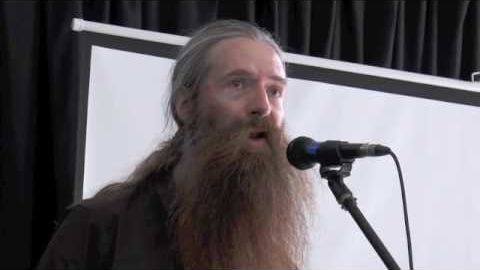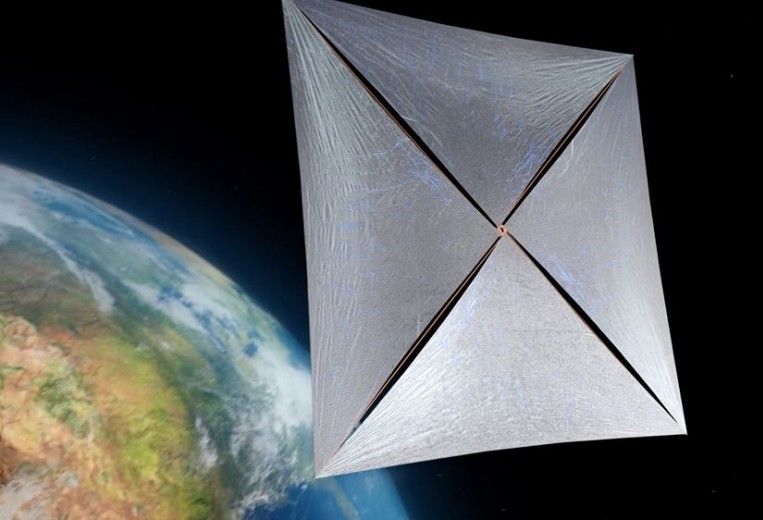Page 10927
Aug 25, 2016
Defect-engineered graphene improves supercapacitors
Posted by Karen Hurst in categories: energy, nanotechnology
Execellent.
Excellent.nanowerk.com/spotlight/spotid=44331.php
Subscribe! Receive a convenient email notification whenever a new Nanowerk Nanotechnology Spotlight posts.
Continue reading “Defect-engineered graphene improves supercapacitors” »
Aug 25, 2016
Scientists solve puzzle of converting gaseous carbon dioxide to fuel
Posted by Karen Hurst in categories: climatology, energy, existential risks, sustainability
Every year, humans advance climate change and global warming — and quite likely our own eventual extinction — by injecting about 30 billion tonnes of carbon dioxide into the atmosphere.
A team of scientists from the University of Toronto (U of T) believes they’ve found a way to convert all these emissions into energy-rich fuel in a carbon-neutral cycle that uses a very abundant natural resource: silicon. Silicon, readily available in sand, is the seventh most-abundant element in the universe and the second most-abundant element in the earth’s crust.
The idea of converting carbon dioxide emissions to energy isn’t new: there’s been a global race to discover a material that can efficiently convert sunlight, carbon dioxide and water or hydrogen to fuel for decades. However, the chemical stability of carbon dioxide has made it difficult to find a practical solution.
Continue reading “Scientists solve puzzle of converting gaseous carbon dioxide to fuel” »
Aug 25, 2016
DREADDing the lateral habenula
Posted by Roman Mednitzer in categories: futurism, neuroscience

Click on photo to start video.
Check out John Neumaier’s talk from NeuroFutures on using DREADDs to explore the brain.
Aug 25, 2016
Angela Merkel becomes Estonian e-resident
Posted by Roman Mednitzer in category: futurism
It was a great honour to host German Chancellor Angela Merkel today at e-Estonia Showroom!
We welcome Angela Merkel as Estonian newest e-Resident — glad to have another virtual Estonian! #eEstonia #eResidency
Aug 25, 2016
The Man Biohacking Encryption From His Garage
Posted by Roman Mednitzer in categories: bioengineering, cyborgs, encryption, transhumanism

A pioneer in the biohacking scene since the mid-2000s, Amal Graafstra’s been experimenting with RFID implants for more than a decade. Now Graafstra is developing implants that go beyond RFIDs.
In episode 2 of Humans+, Motherboard travels to his company Dangerous Things’ garage headquarters to get an early look at UKI, a prototype implant focused on encryption that’s expected to be released in 2017. Amal hopes that this technology will bring us one step closer to merging our physical and digital identities, but how will society react to having these technologies implanted beneath our skin?
Continue reading “The Man Biohacking Encryption From His Garage” »
Aug 25, 2016
FishBot: This stealthy robot studies fish — by pretending to be one
Posted by Albert Sanchez in category: robotics/AI
Aug 25, 2016
Aubrey De Grey — The Need to Dispel Longevity Sticker Shock
Posted by Steve Hill in categories: biotech/medical, life extension

https://www.youtube.com/watch?v=N6eDDIyS_EA
Longevity sticker shock is holding back progress in rejuvenation biotechnology.
Filmed at BIL 2016 in Los Angeles.
Aug 25, 2016
Turkish court orders takeover of opposition media group
Posted by Karen Hurst in category: terrorism
Although this is an old article; it does raise an ongoing question about Social Media Companies and the US Government’s battle with terrorism and other mass murders who often use social media. Could Social Media Companies be pushing their luck within the US as well as other countries battling terrorism by not shutting down people’s pages who have ties to terrorism or promoting murder?
Feel free to respond because I want to hear others perspective on this important topic that many are having to figure out.
(2÷3) Amb Bass: Also watching with concern reports of teargas and rubber bullets against those protesting the takeover.— US Embassy Turkey (@USEmbassyTurkey) March 5, 2016
Continue reading “Turkish court orders takeover of opposition media group” »
Aug 25, 2016
First test of Breakthrough Starshot interstellar probe highlights likely damage due to gas and dust
Posted by Andreas Matt in categories: particle physics, space travel
(Phys.org)—A small team of researchers at Harvard University who are part of the Breakthrough Starshot team has been testing the likely damage to an interstellar spacecraft traveling at approximately one-fifth the speed of light as it makes its way to the Alpha Centauri star system. As they note in a paper describing their testing and results, which was uploaded to the arXiv preprint server, such damage could be catastrophic, but they believe they have a solution.
Earlier this year, Russian billionaire Yuri Milner announced to the world that he wants to send a probe to the Alpha Centauri star system—he put up $100 million of his own money to get the ball rolling on what is expected to be a multi-billion-dollar effort. At the time of the announcement, Milner told the press that his team of advisors had identified 20 main challenges that would have to be overcome in order for such a mission to be a success. In this new effort, the researchers have addressed one of those challenges—assessing the likely damage to the craft due to space dust and gases, and offering solutions to the problem.
The preliminary working design of a space probe able to travel at ∼0.2c is little more than a circuit board that has come to be known as a wafersat—it would be attached to a light sail that would be the target of a laser sent from Earth to push it during the initial part of the journey. The wavsat would be made mostly of graphite and quartz. Thus, the researchers focused the bulk of their testing on these two materials. They discovered that particles of space dust hit by the craft would mostly come in the form of collections of heavy atoms rather than particles—those collisions would cause two problems. The first would be the creation of pits on the surface of the craft, which would result in loss of material (up to 30 percent of the entire craft might be lost).















